













































MARPAC














His Majesty’s Canadian Ship (HMCS) Edmonton deployed on Feb. 13 from its home port of Esquimalt, British Columbia, to conduct drug interdiction on Operation Caribbe

“We continue to strengthen our international relationships and demonstrate Canada’s commitment to address security challenges in the Americas. HMCS Edmonton is proud to be a part of Operation Caribbe along with our partners nations to enhance regional peace and security,” said Lieutenant-Commander Tyler Smith, Commanding Officer, HMCS Edmonton, in a statement.
Friends and family were present to send off Royal Canadian Navy sailors on Canada’s 17th year of contributing to Operation Caribbe – supporting U.S.-led Enhanced Counternarcotics Operations. Along with Canada’s partner nations, HMCS Edmonton will help disrupt drug trafficking and organized crime in South and Central America.
As part of Canada’s broader commitment to engagement in the Americas, Operation Caribbe is one of the many activities undertaken by the Government of Canada and the Department of National Defence/Canadian Armed Forces (CAF). This annual operation directly supports the CAF mission to defend against security threats and security challenges to Canada, North America, and defence and security partners.


Operation Caribbe is Canada’s contribution to U.S.-led enhanced counter-narcotics operations in the Caribbean Sea and the Eastern Pacific Ocean. Under this operation, CAF ships and aircraft deploy to the region on a rotational basis to support the U.S. mission to suppress drug trafficking in international waters.
MANAGING EDITOR
Jazmin Holdway
EDITOR
Kate Bandura
250-363-3372
250-363-3130 kateryna.bandura@forces.gc.ca
WRITER
Peter Mallett pkmallett@shaw.ca
PRODUCTION
Teresa Laird

250-363-8033 production@lookoutnewspaper.com
Leslie Eaton
250-363-8033 workstation3@lookoutnewspaper.com
ACCOUNTS /RECEPTION

Trina Winters
ADVERTISING REPRESENTATIVE
Joshua Buck
250-363-3127
778-977-5433 sales@forcesadvertising.com
EDITORIAL ADVISORS
Lt(N) Michelle Scott
Rodney Venis
250-363-4006
250-363-7060
Published each Monday, under the authority of Capt(N) J. Jeffrey Hutchinson, Base Commander.
Le LOOKOUT est publié tous les lundis, sous l’égide du Capv J. Jeffrey Hutchinson, Commandant de la Base.
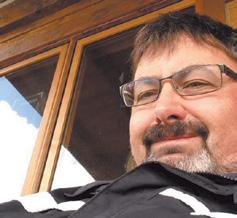
The editor reserves the right to edit, abridge or reject copy or advertising to adhere to policy as outlined in PSP Policy Manual. Views and opinions expressed are not necessarily those of the Department of National Defence.
Le Rédacteur se réserve le droit de modifier, de condenser ou de rejeter les articles, photographies, ou annonces publicitaires pour adhérer au Manuel des politiques des PSP. Les opinions et annonces exprimées dans le journal ne réflètent pas nécéssairement le point de vue du MDN.
Circulation - 2,000 plus 300 pdf downloads per week





Follow us on Facebook, Twitter and Instagram to join our growing social media community.

A Division of Personnel Support Programs
CFB Esquimalt, PO Box 17000 Stn. Forces, Victoria, BC V9A 7N2 Web: www.lookoutnewspaper.com


Fax: 250-363-3015
Canadian Mail Product Sales Agreement 40063331




Today’s navy is much the same as yesterday’s in that hungry sailors have to eat. Today, sailors eat a hearty bowl of soup at morning stand easy. In the days of sail, they might have had to rely on chewing a fatty piece of salt pork.
Growlies is a nickname for any tasty food cooked by a navy chef. Also known as a good bit of scran, a hungry sailor might go around the buoy for a second helping if the meal is good. A voraciously hungry group of sailors can be called gannets, aptly referring to seabirds known for their notoriously insatiable appetites and ability to swallow a fish whole and have it visible as it settles in their gut. Gut wrenches is a nickname for cutlery, i.e., knife, fork, spoon. Sometimes a ship’s cook might go by the nickname gut robber, although the etymology of that term is vague.
The term vittler describes the ship’s cook responsible for ordering and storing food, and is derived from the word victual, pronounced as ‘vit-l’. Victual became part of the English language around the 1300s and was derived from the old French word ‘vitaille’, which means food. The original spelling in English was ‘vitaylle’. ‘Vittles’ is a variant
spelling of victuals, a word commonly heard as American slang.
Other commonly used terms originally derived from the days of sail, when the dining fair was not as palatable as it is today.
Chewing the fat is a term commonly used to describe people gossiping, making friendly small talk, or being involved in a lengthy informal conversation. Legend has it this term was first used to describe sailors who would chew on saltpork fat while they relaxed and conversed. Although no reliable historical references are related to this practice, this explanation remains a popular piece of folklore.
A slush fund is a modern term for hidden money or an account that may be used for miscellaneous expenses, including corrupt or illegal spending. The term is derived from cash a ship’s crew raised by scraping out galley cooking pots and selling the fat (slush) to tallow makers. This cash was secretly kept separate from the purser’s accounts and used to make small purchases for the crew.
You will find over 4,000 examples of Jackspeak in my book Jackspeak of the Royal Canadian Navy (2nd ed.).
The author of ‘Jackspeak of the Royal Canadian Navy’ and ‘Whiskey 601’, Mark Nelson developed a love of the Navy's language and lifestyle over his 26-year career in the service. After retiring as a Chief Petty Officer Second Class, he now works as a Library Systems Specialist at Red River College Polytechnic in Winnipeg, Man.
Follow Mark on Twitter @4marknelson
“A hungry sailor might go ‘round the buoy’ for a second helping if the meal is good.”
~ Mark Nelson, Chief Petty Officer Second Class (Retired)

Are you a Canadian Armed Forces (CAF) member or considering joining? Learn what the CAF has to offer in return for your service to Canada. Explore the full range of benefits, services, and more available to you.

The CAF Offer web pages on Canada.ca can help you understand the following:
• pay rates
• allowances
• healthcare information
• leave options

• pension plans
• benefits
You can also explore information about benefits, such as:
• education
• professional development
• relocation
• family support
• and more!
Aspiring CAF members may be surprised to discover everything the CAF offers. For example, you may be eligible for a complete, no-cost post-secondary education upon joining. The CAF recognizes the unique contributions made by military members and their families. To help you save time finding the information you need, The CAF Offer will remain a comprehensive, up-to-date resource on policies, programs and practices designed to support members and their families.
Bookmark The CAF Offer on Canada.ca today!
https://www.canada.ca/en/department-national-defence/campaigns/the-caf-offer.html
Elin Kelsey, PhDEco-anxiety is one of the most pressing mental health concerns of our time and impacts young people in particular.
Please join the MARPAC Health & Wellness Strategy (MHWS) as we host Elin Kelsey, PhD, for a special 90-min MS Teams presentation on Tuesday, 21 February 2023 from 10:00–11:30 am PST. Elin Kelsey will speak about “Climate Emotions and Evidence-Based Hope”.
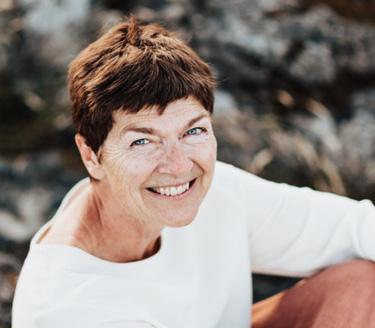
Elin Kelsey, PhD, is an international thought-leader for the evidence-based hope and climate solutions movement. Her bestselling book for adults, Hope Matters: Why Changing the Way We Think Is Critical for Solving the Environmental Crisis, was published by Greystone Books (2020). She co-created #OceanOptimism, a twitter campaign to crowd-source marine conservation solutions which has reached more than a hundred million shares since it launched in 2014.
Elin has history of effecting positive change. She wrote the scientific brief for Pew Global Oceans that led to the dedication, in 2009, of what was then the world’s largest marine protected area, the Marianas Trench Marine National Monument. As an Adjunct Faculty member of the University of Victoria, School of Environmental Studies, and Western Washington University’s partnership in the Redfish School of Change, she is helping to forward a solutions-oriented paradigm for educators, environmental scientists and social scientists.
Elin is a popular keynote speaker and media commentator. She regularly serves as an author/artist in residence, leading workshops with kindergarten to university students across North America and around the world. Her newest film, Breathe, which was commissioned by award-winning filmmaker Marc Silver, is being distributed globally through Amnesty International. Elin is an award-winning children’s book author. Her newest book for children, A Last Goodbye, was published in 2020.
Centenarian Commander (Cdr) (ret’d) Peter Chance is on ‘cloud nine’ after piloting over of Vancouver Island last week.
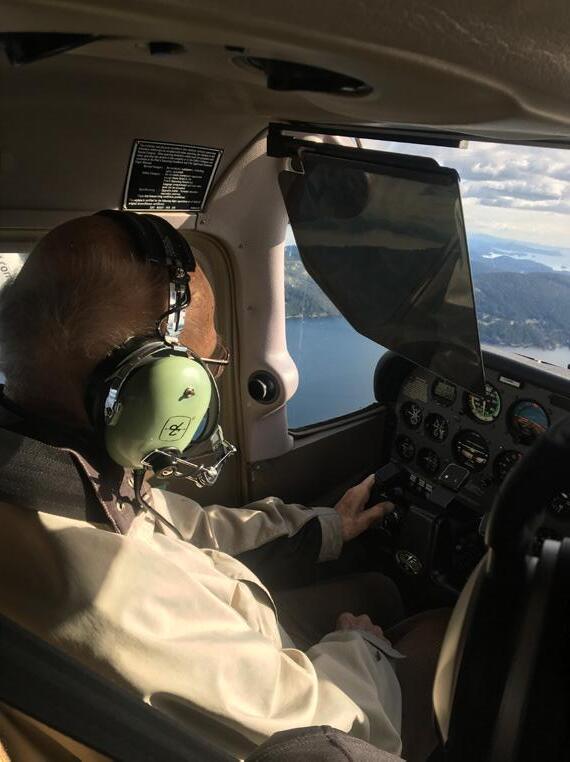

The 102-year-old Second World War veteran spent approximately 45 minutes at the controls of a Cessna 172 Skyhawk on Feb. 13.
“The entire experience was absolutely superb and the most exciting thing that has happened in my life in quite some time,” said Chance. “My heart was racing with excitement and anticipation, before, during and afterwards.”
His time at the plane’s controls was conducted under the watchful eye of pilot and flight instructor Cdr (ret’d) Darren Rich. A former naval engineer, Rich agreed to donate his time as a flying instructor for Chance. The Victoria Flying Club, stepped forward to donate the aircraft and fuel.
At an altitude of 2,500 feet, their flight path took them over Salt Spring Island and the Stuart Channel. Chance got the opportuinity to practice common flying maneuvers after takeoff from Sidney International Airport, including turns, climbs, and descents, Rich said.
“It was such an honour to do this flight and Peter was so energetic and having the time of his life,” said Rich. “I got him to autograph my flight logbook and the experience is one I will cherish forever.”
Chance, who lives in Sidney, previously enjoyed a 30-year career in the Royal Canadian Navy, which included service during the Battle of the Atlantic, the longest continuous military
campaign of the Second World War. During the war, Chance served in various warships, including HMCS Skeena, HMCS Seacliffe and HMCS Gatineau. These were anti-submarine warships used to attack German submarines.
On his 102nd birthday in November 2022, Chance had mentioned to his long-time friend Lieutenant-Commander (ret’d) Paul Seguna that he had loved piloting planes during his days as a naval officer. Chance had previously flown a Tiger Moth as part of his basic training during the war and in a de Havilland Tracker in subsequent years.
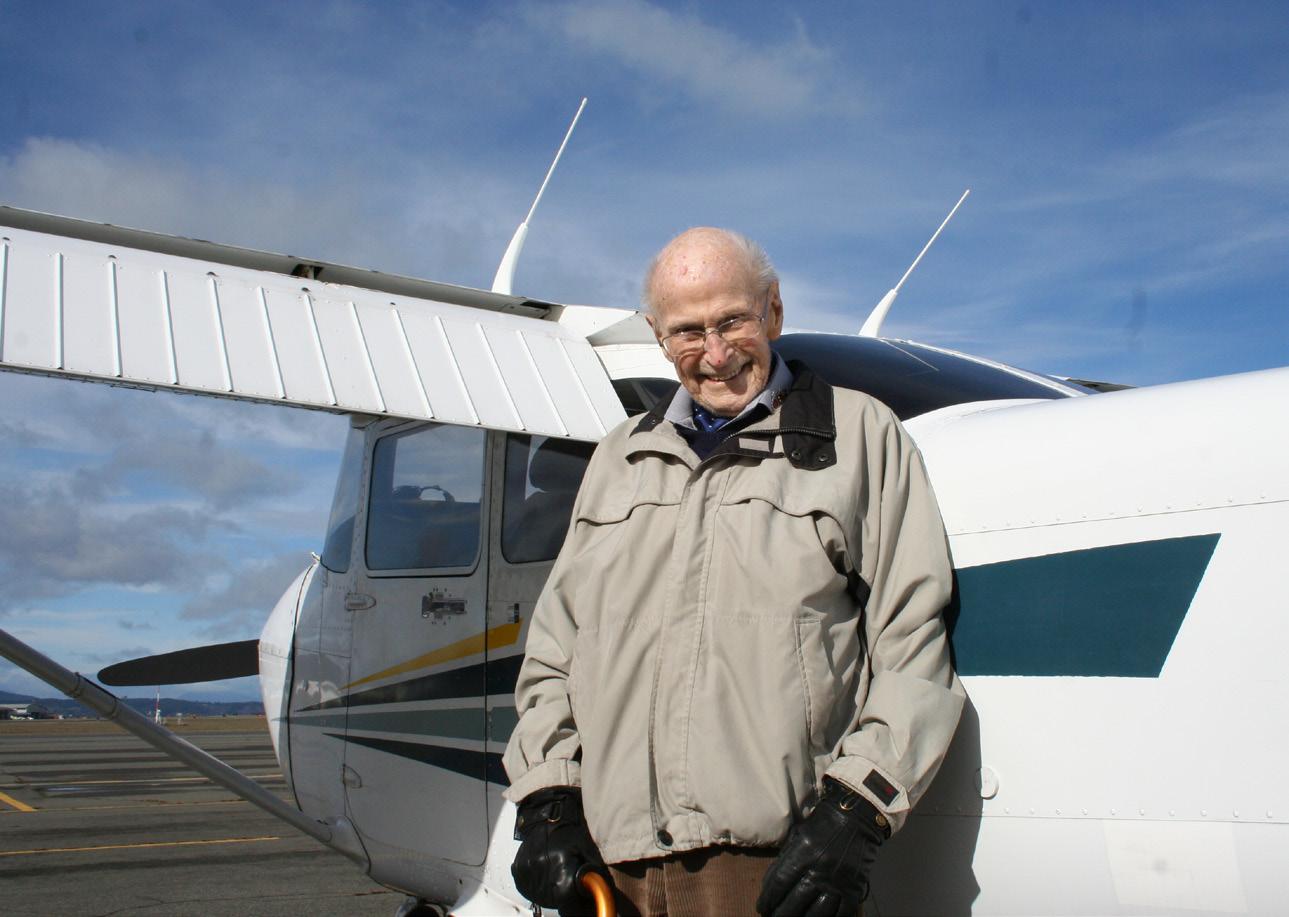
“As I was driving him home he made the comment: boy I would like to get back in the air again,” Seguna said.
A quick phone call to Seguna’s friend Rich set the wheels, or, in this case, propellers, in motion. Rich quickly agreed to the proposal.
Seguna also came along for the ride. For the past six weeks, the trio had attempted to get airborne several times. But factors beyond their control forced several cancellations. They finally got off the ground last week.
“I don’t know of anyone at my advanced age who gets aloft, let alone takes control of an aircraft, so the whole thing was an unbelievable experience for me,” Chance said.
Seguna believes Chance may be the oldest living Canadian Second World War veteran to ever pilot an airplane.
“Even though he is certainly not the oldest to achieve the feat of piloting an airplane, the moment was truly noteworthy, remarkable and uplifting,” Seguna concluded.
Since his retirement in 1970, Peter Chance has served in the Naval Officers Association of Canada, the Duke of Edinburgh’s Award Program and the Royal Canadian Legion.
In 1986, he was awarded the Admiral’s Medal, and then, in 2022, the Queen’s Golden Jubilee Medal; in 2014 he received the French Legion of Honour Medal at the rank of Knight and was also awarded a Minister of Veterans Affairs Commendation.
In 2021, the CFB Esquimalt Naval and Military Museum named its permanent Battle of the Atlantic exhibit in his honor.
experience!” said Sub-Lieutenant Rousseau Harvey, CSF Deputy Logistics Officer.
When you think ‘Navy’, do you think frigates, Arctic and Offshore Patrol Ships and Maritime Coastal Defence Vessels?

Don’t forget submarines and the logistics team who supports them!
To celebrate the Royal Canadian Logistics Service’s 55th anniversary on Feb. 1, the logisticians and sustainers of the Canadian Submarine Force (CSF) were offered a tour of HMCS Corner Brook by Lieutenant-Commander (LCdr) David Hendry, Corner Brook’s Executive Officer. The team boarded the submarine to learn how the complex platform operates and how submariners go about their day.
“From climbing down the long ladder into the platform, to peering into the small messes and accommodations onboard, it was a uniquely close-maneuver
When the submarine sails away from the home port, a specialized team of logisticians is also deployed to the foreign port to provide forward logistics support. The Submarine Support Team provides the submarines and their crew port service arrangements and parts, and processes submariners’ pay and administration. A Logistics Officer and a Submarine Technical Officer lead this team.
“Exposing logisticians working ashore to these submarines and discussing requirements with seasoned submariners is a key component for fostering teamwork and friendship between trades. The tour helped my team understand how to better serve the boats and anticipate their needs,” said LCdr Alan Ng, CSF HQ Commanding Officer.
As he attempted to summarize his time as Commanding Officer, first of HMCS Montréal and then of HMCS Charlottetown , Commander (Cdr) Christopher Devita said it made the most sense to focus on the accomplishments of his crew.
This is because of the classified nature of much of the ship’s exploits as part of the NATO fleet in 2022 and the sheer amount of work thrown at his sailors.
“I’ve never been more proud of a ship’s company and the fighting spirit that was displayed by the team,” Cdr Devita said during a Change of Command ceremony on board HMCS Charlottetown on Feb. 6.
From the early days of workups and exercises that required fixing equipment, training sailors, and solving deficiencies, to
the difficulties surrounding the Omicron COVID-19 variant, to constantly shifting mission requirements, he said the expectations were lofty. When the ship’s company arrived in Rota, Spain, in February 2022 to begin an Operation Reassurance deployment, they did so with immense pride.
“The deployment had many challenges. It included an evolving and then diminishing COVID situation, the war in Ukraine, and a number of close encounters with Russian forces, all taking place far from home. But yet, the crew did it, and did it well,” he said.
After returning to Halifax, the crew also dealt with the added task of completing a full crew swap from HMCS Montréal to Charlottetown in September of last year. Some sailors were posted out, with new sailors taking their place, but the new Charlottetown team remained a cohesive family that worked tirelessly to begin bring-
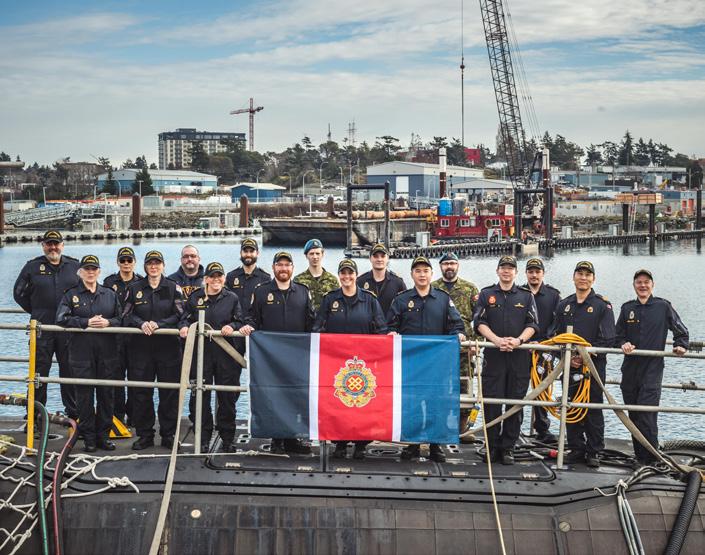
ing a second ship into fighting shape, Cdr Devita said.
“Charlottetown is now able to sail. The ship is progressing through new missions and getting stronger every day,” he said.
As the reviewing officer for the Change of Command, Commodore (Cmdre) Trevor MacLean, Commander Canadian Fleet Atlantic, described the occasion as special due to the extraordinary work put on Cdr Devita and his team since the summer of 2021.
“The crew completed everything we asked – the mission, the crew swap, and getting Charlottetown moving again. That’s serious work, and a testament to Cdr Devita’s leadership,” he said.
Cmdre MacLean added the program for Cdr Nicholas Buxton, the incoming Commanding Officer, will also bring similar challenges as the ship’s company works to bring Charlottetown to full
readiness ahead of upcoming exercises and an expected stint as the flagship of NATO Standing Maritime Group 2 in the Mediterranean in 2024.
Cdr Buxton is a former Executive Officer of HMCS Halifax through 2018/2019 and was most recently the Commanding Officer of the Naval Training Development Centre (Atlantic).
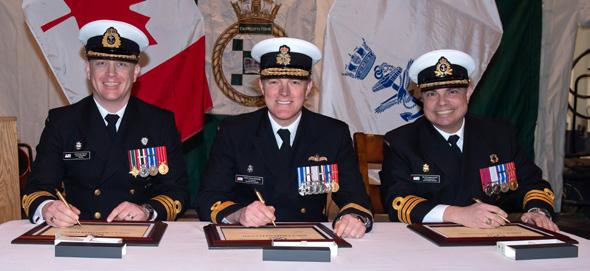
Stepping into his new role and speaking to his new crew for the first time, along with several family members in attendance, Cdr Buxton said he was ‘truly humbled’ to be trusted with the responsibility of commanding a Halifax-class frigate for the next two years.
“I’m so excited to begin working with the ship’s company as we face our future challenges of trials, training, force generation, international exercises, work periods, and eventually deployment,” he said.


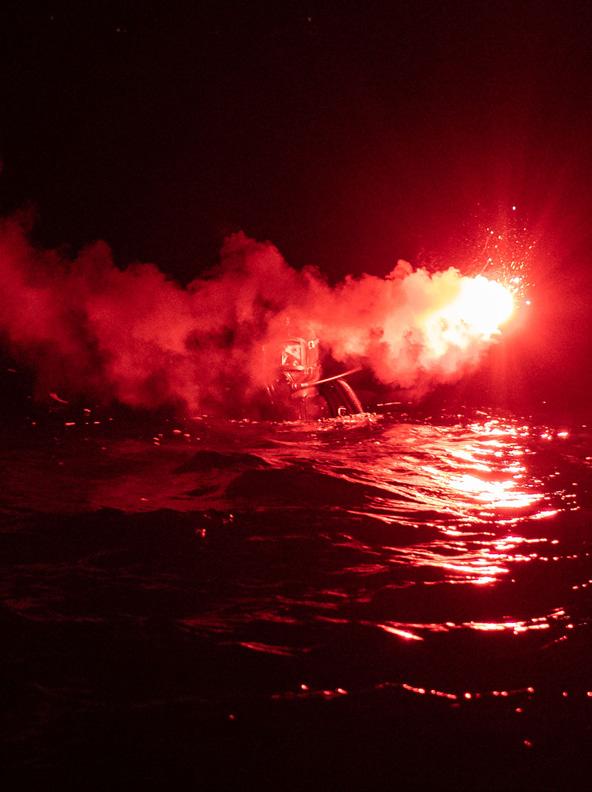


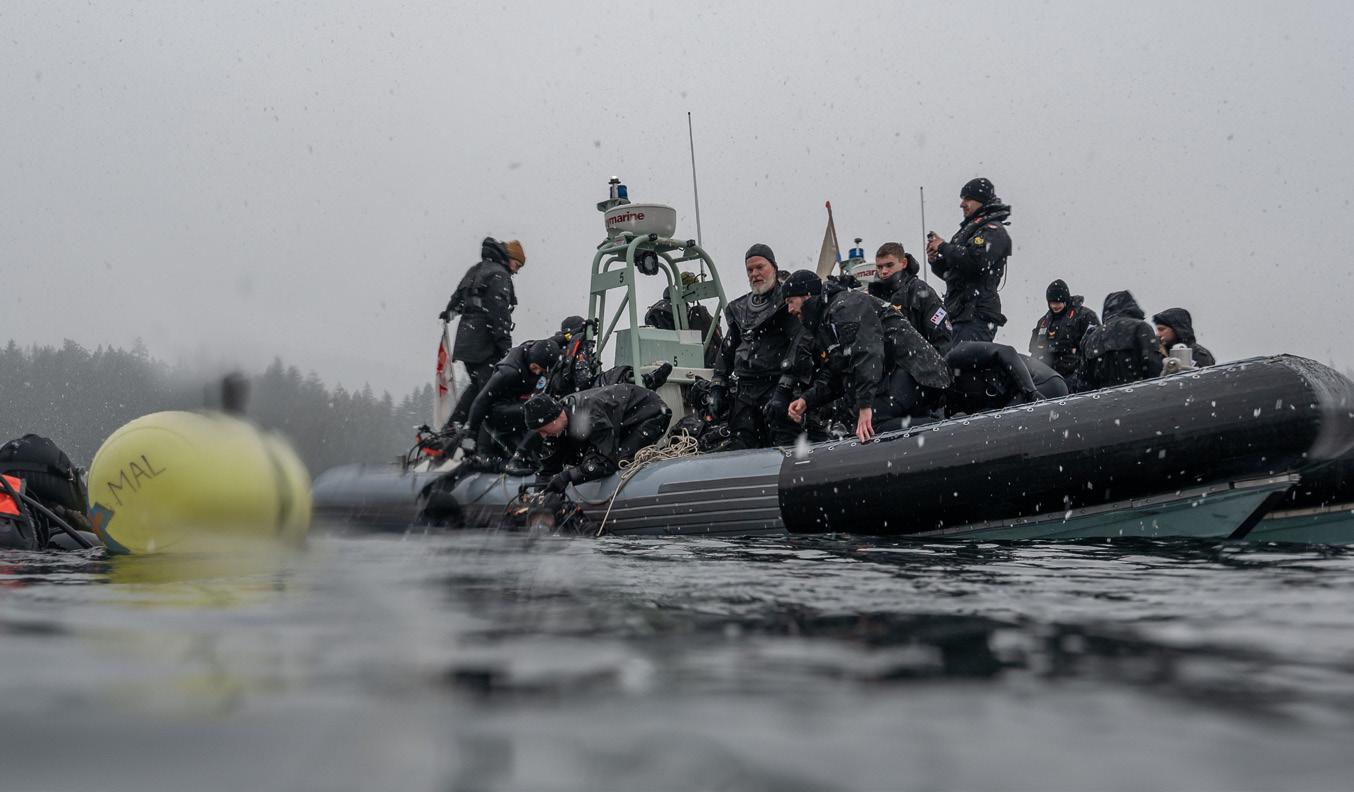
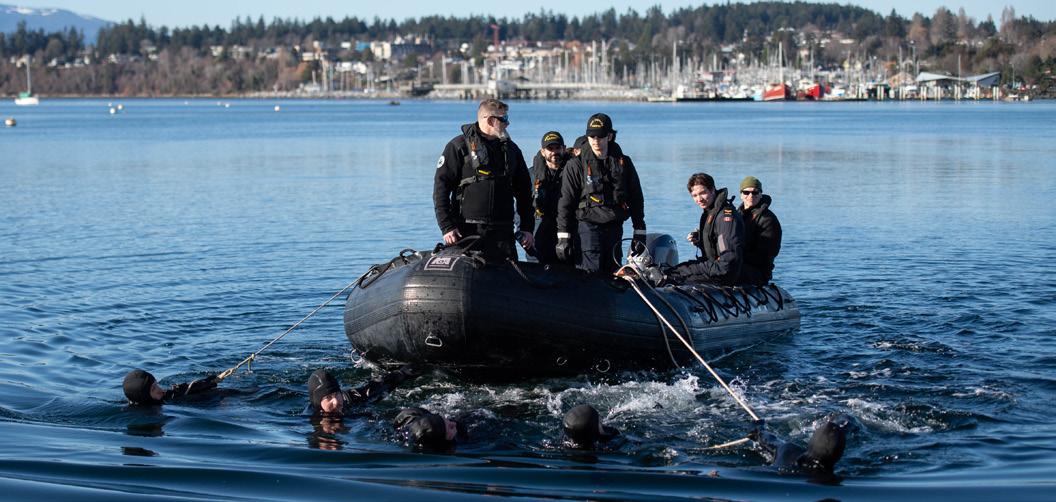

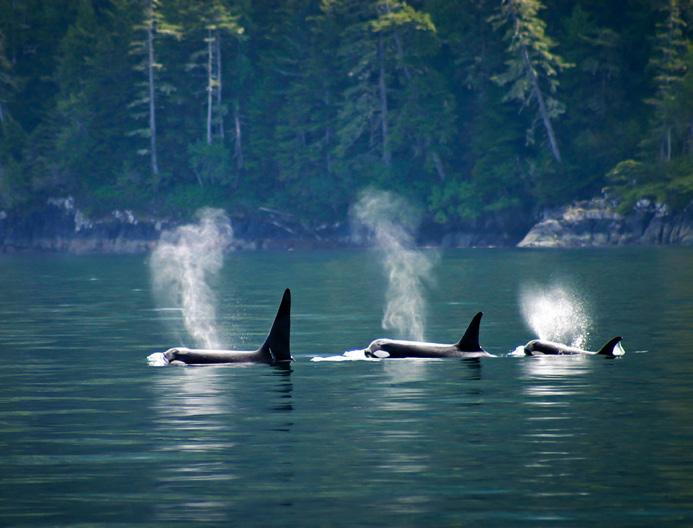
DND
Defence science and technology, led by Defence Research and Development Canada (DRDC), is helping the Canadian Armed Forces (CAF) understand, monitor, reduce and mitigate its impact on the marine environment.

DRDC is taking a multi-disciplinary, multi-pronged approach working with partners in industry, academia and other government departments to develop innovative solutions that benefit the marine environment and CAF operational capabilities.
An example of the type of innovative research is the work of Layton Gilroy and Matthew Gauthier, defence scientists at DRDC Atlantic Research Centre. In collaboration with Transport Canada, and as part of their Quiet Vessel Initiative, they’re researching a quieter propeller to reduce ocean noise.
Propellers rotating at higher speeds can create bubbles or cavities in water called “cavitation”. When the bubbles “pop”, the implosions can damage nearby surfaces and significantly increase underwater noise. A “cavitating” propeller is generally the loudest
noise source on a ship.
The researchers set out to increase the ship speed at which cavitation begins, known as “cavitation inception speed”.
The faster a ship can go before cavitation begins, the less time spent operating with a cavitating propeller and the less the overall noise will impact the environment.
“Understanding how to increase cavitation inception speed in propeller design is a win-win for the Canadian Armed Forces as it reduces impacts on whales and makes RCN ships less detectable and may extend the life of propellers,” Gilroy said.
The Royal Canadian Navy’s ORCAclass training vessels were selected for this research because the results can be used for both naval and civilian ocean noise reduction goals as the ships are commercially constructed and data from the research is unclassified.
To design a quieter propeller, DRDC worked with its international partners to analyze the propeller and ship numerically and to build a 1:7 scale model of the vessel. Numerical studies were performed to design a propeller, which would cavitate at a much higher ship
speed and then the model-scale propeller was tested in a towing tank. The new design showed significant potential improvement of about five knots in the cavitation inception speed. This research is now ready to advance to a full-scale trial.
If successful, the quieter design could have implications beyond the Royal Canadian Navy and reduce overall ocean noise.
Gilroy has also been using the technology to
monitor the underwater noise of naval vessels to allow civilian ships to monitor their noise levels. Trials with an ORCA-class vessel at Patricia Bay, British Columbia, were performed to measure onboard vibrations as well as radiated noise. This database can be used to predict underwater noise using onboard sensors in real time. A simpler system could be installed on civilian ships to both monitor when cavitation begins and the resulting noise levels.

SISIP Financial
Leaving the Canadian Armed Forces (CAF) is a big decision with many financial considerations. Ideally, the decision to release isn’t spontaneous.
Have a plan and get the timing right. Consider these top five financial considerations when planning your release.
Pension options and timing
CAF members have one of the best pensions in Canada. Your pension is calculated on the years of service you complete. Releasing early can have an impact. Timing matters. As you decide how and when to collect your pension, take the time to make the best choice.
Four options for your pension payout:
1. Receive your pension immediately upon release. If you’ve completed your mandatory years of service and are over age 50, or if you’ve served for a minimum of two years and are 60 or older, you can start collecting your pension immediately.
2. Defer your pension until you reach retirement age. Perhaps you’re starting a second career, haven’t got the minimum age to collect your pension, or have chosen to release early. You can wait to collect your pension until age 60. (Keep in mind that if you release
early, your pension entitlement is based on your years of service).

3. Pension roll-over. If you start a job in the federal public service, you may transfer your pension to your new employer. Some people choose to keep their CAF pension separate. Ask your SISIP advisor how to evaluate the buyback cost of a federal public service pension so you only pay what is necessary.
4. Transfer your pension value. If you’re young or releasing early, you may choose to “cash-in” your pension, so to speak, and invest it elsewhere. You may have valid reasons for selecting this option but be prepared. You could lose money.
When you take a lump sum, significant income tax implications may cut the net value of your pension transfer substantially. External economics matter. When inflation is high, as it was in 2022, the transfer value of your pension may be dramatically reduced. The income gap
• Expect a pension payout after you release from the CAF. There must be a gap between your final paycheck and your retirement income.
• Waiting periods range from six weeks to six months.
• Minimum of 45 days for the first pension instalment, only if all your paper-
work has been filled out and submitted correctly before your release.
• Between four and six weeks before Long-term Disability (LTD) instalments are paid out.
• Three to six months for a pension transfer.
Insurance needs
• Your life insurance and critical illness coverage needs will change when the CAF no longer employs you. It’s much easier to get an insurance assessment done before you release when your medical records are held internally.

How much insurance do you need?
Life insurance should be substantial enough to cover outstanding mortgages or debts and provide your beneficiaries income.
Critical illness insurance is uniquely calculated to ensure your beneficiaries are looked after if you cannot work.
Relocation
Where do you plan to live post-release? If you currently live in or near a military community, is it possible to find employment or housing in the area that’s suitable once you’re no longer serving? Often, people choose to move following their release.
Three financial reasons to consider relocation before your release:

• Secure a mortgage. If you plan to pur-
chase a new home, getting a mortgage is often more manageable when you still have employment income.
• Access relocation benefits. You could be eligible for a relocation allowance for your final move.
• Secure civilian medical and dental services. Having a family doctor and other services in place before release makes it easier to update your insurance.
Second career income
Are you planning to start a new career or launch a business following your release? Only go into this next phase with a financial plan to ensure your income and spending match your lifestyle.
Create a tailored financial plan.
Discuss tax implications, pension and investment options if you have multiple sources of income in retirement.
Develop a budget that accounts for income from your new career, costs associated with work or running a business and your retirement income.
Determine if the timing is right for your release or if there are financial benefits to waiting.
Visit your local SISIP office to review pension options, develop a savings strategy and plan for retirement.
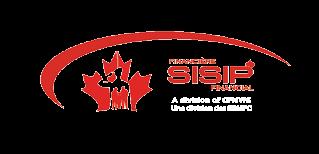
Since 1942, the Royal Canadian Naval Benevolent Fund (RCNBF) has been supporting naval veterans, serving members and their families in times of need. Their recently-renewed vision is to support our naval family as their own, promoting the well-being of the naval community to enrich the lives of sailors, veterans and their families. In doing so, they have diversified their program offerings and created the Vice-Admiral Mark Norman Leadership Award in 2020.
The Award recognizes a serving shipmate of the Royal Canadian Navy (RCN) whose outstanding efforts and leadership have significantly contributed to the overall quality of life and wellbeing of the broader naval community.
RCNBF respectfully requests that the nominations to the RCNBF for committee review arrive by March 15, 2023.
Award adjudication and selection are based on the following criteria:
a. Selfless dedication towards the
betterment of the quality of life and service in the Navy;
b. Outstanding contribution to the overall well-being of the broader naval community;
c. Advocacy for physical fitness and mental health.
Eligibility:
a. Currently serving members of the Royal Canadian Navy;
b. Currently serving members of the Canadian Armed Forces serving in direct support of the RCN; and

c. Both Regular and Reserve Force members.
Award:
The RCNBF provides an annual cash award of $5,000 to the successful nom inee. The amount is donated to an organization(s) of the recipient’s choosing that supports activities related to the well-being of naval veterans, serving members, and/or military families to receive the gift. The organization must be a registered charity.
Process:
a. Nominations for The Vice-Admiral Mark Norman Leadership Award are to be submitted through their chain of command for endorsement;
b. Following endorsement from the unit commanding officers, nominations are to be forwarded to C Navy DNP 2-7, info formation honours and recognition coordinators, NLT March 1, 2023, via email;
c. Submissions will then be forwarded to the RCNBF awards committee for selection by March 15, 2023; After submission to the RCNBF, the awards committee will adjudicate the nominations, select a recipient, and advise CRCN.
Guidelines for submission to the RCNBF:

a. Endorsement letter from the nominees commanding officer;
b. One page narrative should include the following details:
1. Nominee: Sn/rank/surname/ given names/post nominals/ MOSID/component/branch;
2. Nominator: Rank/surname/given names/contact information;
3. Detailed timeline;
4. Description of the nominee’s efforts.
c. Supervisors of all ranks are highly recommended to draft the submissions for the Award contributions made by the nominee over and above the recommended criteria listed;
d. Note the contributions have to have occurred in 2022 to be eligible for this year’s Award. For additional information contact your respective formation Honours and recognition representatives.
Tuesday March 16 from 10:00–11:30 am PST
Please join The MARPAC Health & Wellness Strategy (MHWS) and the Defence Visible Minorities Advisory Group (DVMAG) as we co-host Dr. Lisa Gunderson for a special 90-minute MS Teams presentation in recognition of the International Day for the Elimination of Racial Discrimination on Tuesday, 16 March 2023, from 1000-1130 hrs PST. Dr. Gunderson will be speaking to ‘Micro-Interventions’ – ways of challenging racism and bias in the moment, as micro-aggressions appear.
Dr. Gunderson, provides justice, equity, diversity, and inclusion (JEDI) services to organizations, government, and businesses. These services include professional development training/education, consultation, keynotes and motivational speaking. Further, she provides racial equity education (including anti-Black and anti-racism services to those who have experienced and perpetuated racialized violence).

She has a Bachelor’s Degree in psychology and social sciences and communication, and Masters and PhD degrees in clinical psychology (emphasis in child/youth) from the University of Southern California. Currently, she is a Registered Clinical Counsellor in Canada. Dr. Gunderson is an award winning educator, community speaker, organizer, leader, and equity consultant and trainer for various institutions in Canada and the United States, focusing on issues that impact BIPoC populations, especially on racial identity and mental wellness.
In Canada, she has taught at Camosun College, Justice Institute of British Columbia, and Vancouver Island University. In addition, she taught the dual-credit courses at various high schools throughout Greater Victoria, and provided key subject matter expertise to the Ministry of Public Safety and Solicitor General during the development and implementation of provincial training on fair and impartial policing. Dr. Gunderson is currently the Vice-President English for the Federal Green Party of Canada and the first IBPoC person to be elected in that role.

Happy Valley, Langford – available April 1, $1,400/month 1 bed, 1 bath 496 sq.ft. suite with private entrance, suitable for one person. Baseboard heating and shared laundry. Parking and utilities included. On #48, 54, 55 and 64 bus routes. Email bogfairy@shaw.ca. 03-06
Near Base – available March 1, $1,850/ mo, 2 bedroom, 1 bathroom, 760 square feet. Includes water, one parking spot and laundry. Located next to Red Barn market. No dogs, cats allowed. No Smoking. Month to month lease. Contact: gvtalavera@yahoo.com or (250) 5898225 02-27

Westbay area – 2 bed suite available now in small, quiet apartment building. Across the street from Capt. Jacobsen’s Park in Esquimalt. Close to base, transit, rec center, parks and amenities. Lots of storage, in-suite washer and dryer, and dishwasher. Located on second floor – no elevator. Small quiet pet considered. No smoking of any kind. Email Mark.Lindholm@Lindholmland.ca or text 250.361.5344 for viewing. 02-27
The MARPAC Health and Wellness Strategy’s Mental & Social Wellness Working Group encourages all Defence Team members to proudly wear pink on Pink Shirt Day, Wednesday, Feb. 22., and take a stand against bullying!

MARPAC is a diverse workplace that encourages everyone to embrace their cultures, identities and authentic selves. This year’s theme for Pink Shirt Day is Lift Each Other Up. The goal is to emphasize the importance of taking a stand against bullying and advocating for kindness and inclusivity.
Join us and Dress with a Difference by wearing a pink shirt to support the message of creating a safe and healthy workplace. For more information on the Pink Shirt Day campaign, please visit www.pinkshirtday.ca.
Official Pink Shirt Day t-shirts can be purchased at London Drugs, or you can wear any pink shirt you already have!
Congratulations to those who attended the MAR TECH USQ S2 0041 Graduation Ceremony on Feb. 8. Certificates of Completion were handed out by Lieutenant (Navy) Owen Murphy.
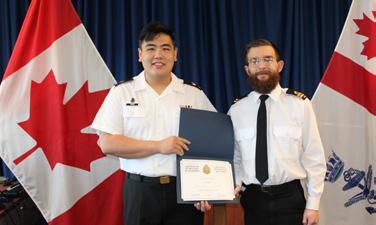


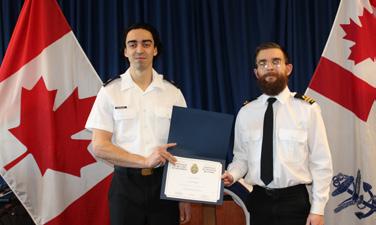

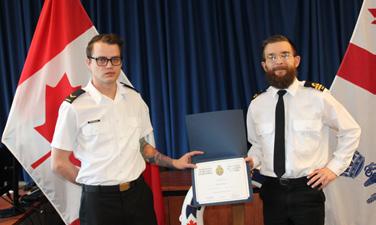
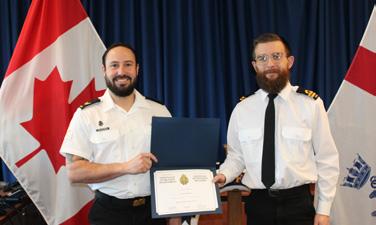
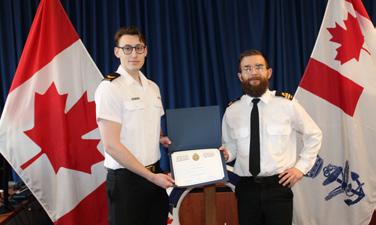
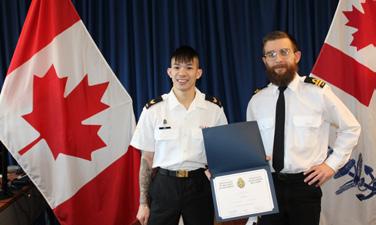

NPTG held an Awards and Presentation Feb. 9. Presented by Commander Maude Ouellet-Savard.
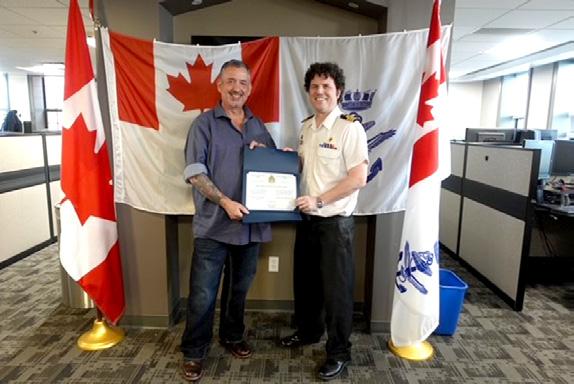


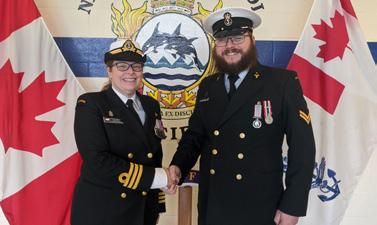

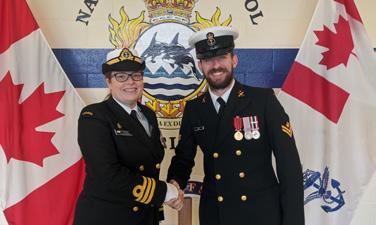


MASTER
PETTY
MARCH







Powell River-based Sunshine Coast Health Centre and the Georgia Strait Womens Clinic provide highly personalized addiction, mental health and trauma treatment for male and female clients respectively. Get daily 1-on-1 inpatient or outpatient treatment tailored to your unique needs.

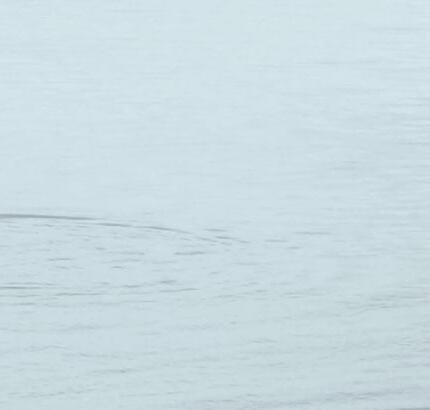
Services include 24 hour-medical service, psychiatric assessment, EMDR, rTMS, psychotherapy, hypnotherapy, a dedicated group for military clients and much more.

Serving the Department of National Defence and Veterans A airs Canada since 2009.
